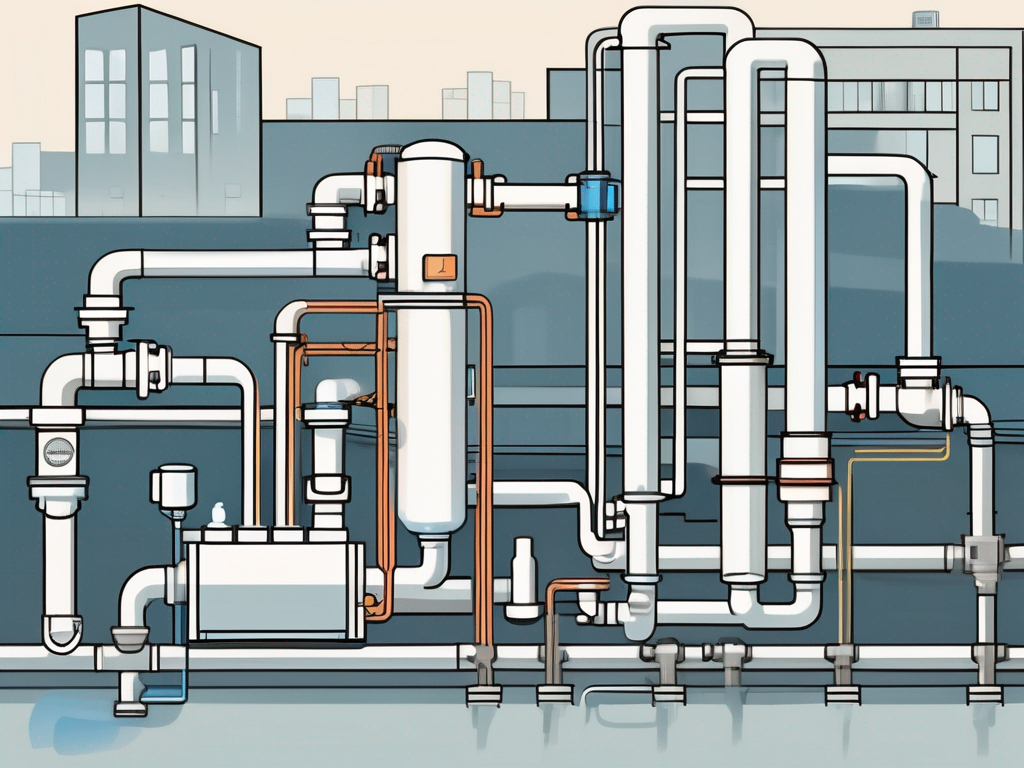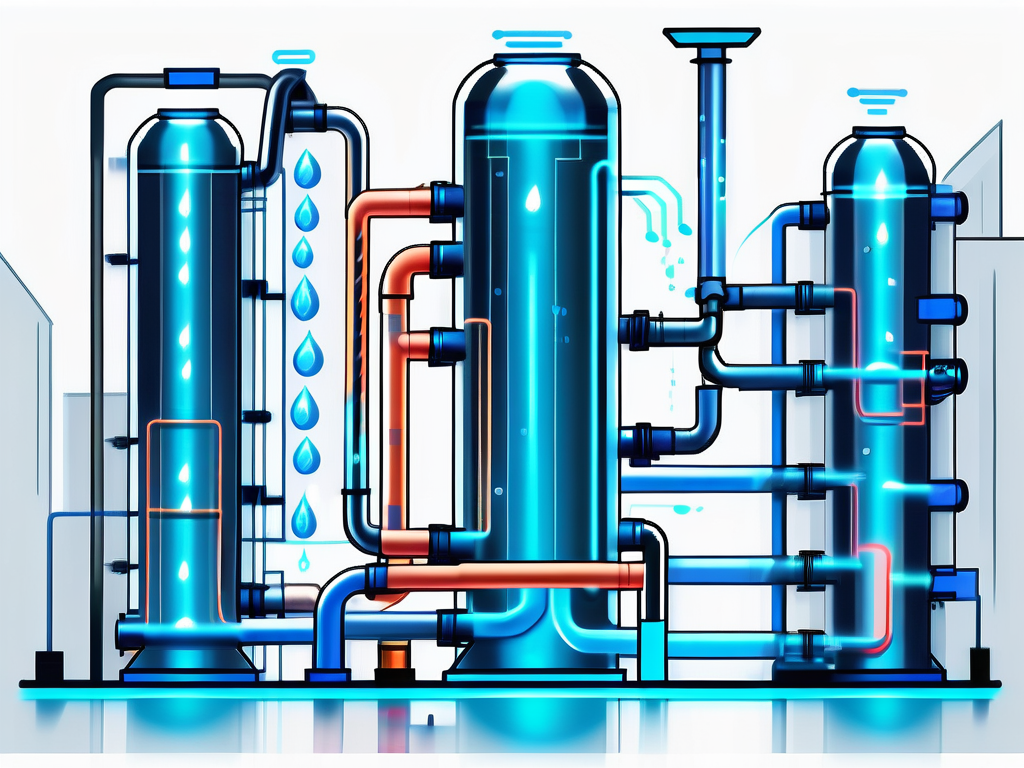
Top Benefits and Applications of Water Booster Systems
Water is essential for everyday life, and ensuring a reliable water supply is increasingly important in various settings. One solution that has gained popularity is the water booster system. This article will explore the benefits and applications of these systems, aiming to inform consumers and businesses about their value. From improved water pressure to sustainability, we will cover a wide array of advantages that water booster systems offer.
Understanding Water Booster Systems
A water booster system is designed to increase the pressure of water flowing through pipes to ensure a consistent and reliable supply. These systems can be crucial in areas where municipal water pressure is insufficient, or during peak demand times when water usage drastically increases.
What is a Water Booster System?
At its core, a water booster system consists of one or more pumps that increase water pressure. These systems may include various components such as pressure tanks, flow switches, and control panels, which work in tandem to enhance the efficiency of water delivery.
The primary goal of a water booster system is to provide an adequate supply of water at the desired pressure, making it essential not only for residential settings but also for commercial and industrial applications where strong water flow is required. For instance, in high-rise buildings, water booster systems are indispensable as they ensure that water reaches upper floors, overcoming the gravitational pull that would otherwise hinder water flow. Additionally, these systems can be tailored to meet specific needs, such as providing hot water for commercial kitchens or maintaining pressure in irrigation systems for agricultural purposes.
How Does a Water Booster System Work?
Water booster systems function by drawing water from the main supply and pushing it through a series of pumps. When the water enters a booster pump, it is compressed and sent through the pipes at increased pressure.
These systems operate automatically, with pressure sensors detecting the existing water pressure and adjusting the pump's activity accordingly. When the water demand increases, such as during morning hours when households are waking up, the system kicks in to meet this demand seamlessly. Moreover, advanced water booster systems are equipped with variable frequency drives (VFDs) that allow for more precise control of pump speed, optimizing energy consumption and reducing wear and tear on the equipment. This not only extends the lifespan of the system but also contributes to lower operational costs, making it a smart investment for both residential and commercial users.
Key Benefits of Water Booster Systems
Investing in a water booster system comes with numerous benefits that enhance both home and business operations. Below, we delve into the key advantages that these systems provide.
Improved Water Pressure
One of the most significant advantages of water booster systems is improved water pressure. Low pressure can lead to issues such as weak showers, inadequate dishwashing, and even flushing problems in toilets.
By installing a water booster system, users can enjoy consistent and increased water pressure, allowing for a more comfortable and efficient living or working environment. This improvement not only enhances daily activities but can also contribute to better hygiene practices, as higher water pressure allows for more effective cleaning and sanitation, which is particularly vital in households with children or in commercial settings where cleanliness is paramount.
Energy Efficiency and Cost Savings
Water booster systems contribute to enhanced energy efficiency. Modern systems are designed with energy-saving technologies, allowing them to operate at a lower power consumption level compared to older models.
This efficiency translates to cost savings on utility bills, which can be significant over time, especially in larger facilities where water consumption is high. Many users report reduced operational costs after implementing a booster system. Additionally, the environmental impact is noteworthy; by decreasing energy usage, these systems help reduce the carbon footprint associated with water delivery, making them a more sustainable choice for conscientious consumers and businesses alike.
Consistent Water Supply
A consistent water supply is critical for many applications, be it residential or industrial. Water booster systems ensure that even in situations of high demand, water delivery remains steady.
This reliability is particularly important in commercial settings such as restaurants, hotels, and hospitals, where a sudden drop in water supply can lead to service interruptions and customer dissatisfaction. Furthermore, in regions prone to fluctuating water availability due to seasonal changes or infrastructure challenges, a water booster system can serve as a safeguard, ensuring that essential services continue uninterrupted and that businesses can maintain their reputation for reliability and quality service.
Various Applications of Water Booster Systems
Water booster systems are not limited to one specific type of application. Their versatility makes them suitable for various environments, including residential, commercial, and industrial settings.

Residential Use
In residential homes, water booster systems are essential for those living in areas with low municipal pressure. They can enhance the user experience in activities such as bathing, cooking, and cleaning.
Homeowners can enjoy the convenience of high-pressure showers, fast-filling tubs, and efficient irrigation systems for gardening, all contributing to a higher quality of life. Additionally, these systems can be particularly beneficial in multi-story homes where water pressure diminishes significantly on upper floors. By installing a water booster system, residents can ensure that every level of their home receives adequate water flow, making daily tasks more manageable and enjoyable.
Commercial Use
For commercial establishments, water booster systems are crucial in ensuring that they can meet the demands of their customers. Restaurants require high water pressure for dishwashing and food prep, while hotels need consistent water flow for guest services.
Inadequate water pressure in commercial settings can lead to delays and unsatisfactory service, thereby underscoring the importance of having a robust water booster system. Furthermore, businesses such as laundromats and gyms also benefit significantly from these systems, as they rely on a steady supply of water for their operations. A reliable water booster system not only enhances customer satisfaction but can also improve operational efficiency, allowing businesses to serve more clients in a shorter amount of time.
Industrial Use
Industrial facilities often have large water demands, making booster systems integral for operations. Manufacturing plants, processing facilities, and chemical plants rely heavily on efficient water supply and pressure.
By ensuring that water pressure remains high even during peak usage hours, these systems help avoid costly downtime caused by inadequate water supply. Moreover, in industries where water quality is critical, such as pharmaceuticals or food processing, booster systems can be equipped with filtration and purification technologies to maintain the necessary standards. This dual functionality not only supports production processes but also ensures compliance with health and safety regulations, making water booster systems a vital component in maintaining both productivity and quality in industrial applications.
Choosing the Right Water Booster System
When considering a water booster system, various factors must be assessed to ensure the right choice is made. Understanding these factors is vital for investing in a system that meets specific needs.
Factors to Consider
Some critical factors to consider include the desired water pressure, the flow rate needed, and the total number of fixtures that will be using the water supply simultaneously. An accurate assessment of these requirements will lead to selecting an appropriately sized system.
Additionally, considering the installation environment and potential requirements for maintenance can influence the decision on the type of system to install. For instance, if the system is to be installed in a confined space, the physical dimensions and noise levels of the pump become crucial. Furthermore, understanding the local water quality and any potential contaminants can help in selecting a system that includes necessary filtration or treatment options, ensuring the longevity of the equipment and the safety of the water supply.
Types of Water Booster Systems
Water booster systems come in various types, including single pump, multi-pump, and variable speed systems. Single pump systems are suitable for homes with basic water needs. In contrast, multi-pump systems are ideal for larger commercial or industrial applications that demand consistent high pressure.
Variable speed systems offer the added advantage of adjusting pump speed based on current water demand, further enhancing energy efficiency and reducing operational costs. These systems not only provide a steady water supply but also minimize wear and tear on the pump, extending its lifespan. Additionally, many modern variable speed systems come equipped with advanced monitoring technology, allowing users to track performance metrics and receive alerts for maintenance needs, thus ensuring optimal operation over time. This level of sophistication can significantly reduce downtime and service interruptions, making them an attractive option for both residential and commercial users.
Maintenance and Troubleshooting of Water Booster Systems
Proper maintenance is crucial to ensure the longevity and efficiency of water booster systems. Regular checks and servicing can prevent common issues that may arise over time. Neglecting these systems can lead to decreased water pressure and even complete system failure, which can be both inconvenient and costly. Therefore, understanding the importance of routine maintenance is essential for any property owner relying on these systems.
Regular Maintenance Tips
To keep a water booster system in top condition, regular maintenance should include: checking and cleaning filters, inspecting electrical components, and monitoring pressure readings. Additionally, it is important to verify that the system is operating within the manufacturer’s specified parameters, as deviations can indicate underlying problems that need immediate attention.
- Replace components such as pressure gauges and pressure switches as needed.
- Inspect for leakages in pipes and connections.
- Schedule professional inspections to address potential problems before they escalate.
By maintaining the system regularly, users can ensure optimal performance and extend the life of their investment. Regular maintenance not only enhances the efficiency of the system but also helps in conserving water, which is an increasingly valuable resource. Furthermore, keeping a detailed maintenance log can assist in tracking the system’s performance over time, making it easier to identify patterns or recurring issues.
Common Issues and Their Solutions
Some common issues with water booster systems include loss of pressure, strange noises, and pump failure. Each of these issues can be linked to either operational inefficiencies or component failures. Loss of pressure, for instance, may be caused by blockages in the system or worn-out components that need replacement. Strange noises can indicate that the pump is struggling, possibly due to air trapped in the system or misalignment of the motor.
Solutions can range from simple resets of the system’s control panel to more complex repairs involving the replacement of damaged parts. For more complicated issues, it’s advisable to consult a professional to get the system back in working order. Additionally, users should be aware of the importance of using genuine replacement parts, as substandard components can lead to further complications and may void warranties. Understanding the specific needs of the water booster system can empower users to take proactive measures, ensuring that their water supply remains consistent and reliable.
The Future of Water Booster Systems
The landscape of water booster systems is evolving, driven by advancements in technology and a growing focus on sustainability. Understanding these trends can help consumers make informed choices about their water systems.

Technological Advancements
Recent developments in technology have led to smarter water booster systems with enhanced features like remote monitoring and automated adjustments based on water demand. Such innovations not only improve user experience but also ensure maximum efficiency.
As the industry continues to invest in research and development, consumers can expect even more advanced systems that better serve their needs while minimizing energy usage. For instance, the integration of IoT (Internet of Things) technology allows for real-time data collection and analysis, enabling users to track their water consumption patterns and identify potential leaks or inefficiencies. This proactive approach not only saves water but also reduces utility costs, making it a win-win for both the environment and the consumer.
Sustainability and Environmental Impact
As water scarcity becomes a more pressing global issue, the environmental impact of water booster systems is a significant consideration. Modern systems are being designed with sustainability in mind, employing energy-efficient technologies and recyclable materials.
Choosing a water booster system thoughtfully can contribute to environmental conservation efforts while ensuring that both residential and commercial users have access to reliable water supplies. Additionally, many manufacturers are now implementing eco-friendly practices in their production processes, such as using renewable energy sources and reducing waste. This shift not only enhances the sustainability of the products themselves but also encourages a broader industry movement towards greener practices, ultimately benefiting the planet.
Moreover, the rise of smart water management systems is paving the way for more integrated solutions that combine water booster technology with rainwater harvesting and greywater recycling systems. By utilizing multiple water sources, consumers can significantly reduce their reliance on municipal water supplies, further alleviating the strain on local water resources. This holistic approach to water management not only enhances water security but also fosters a culture of conservation and responsible usage among users.
